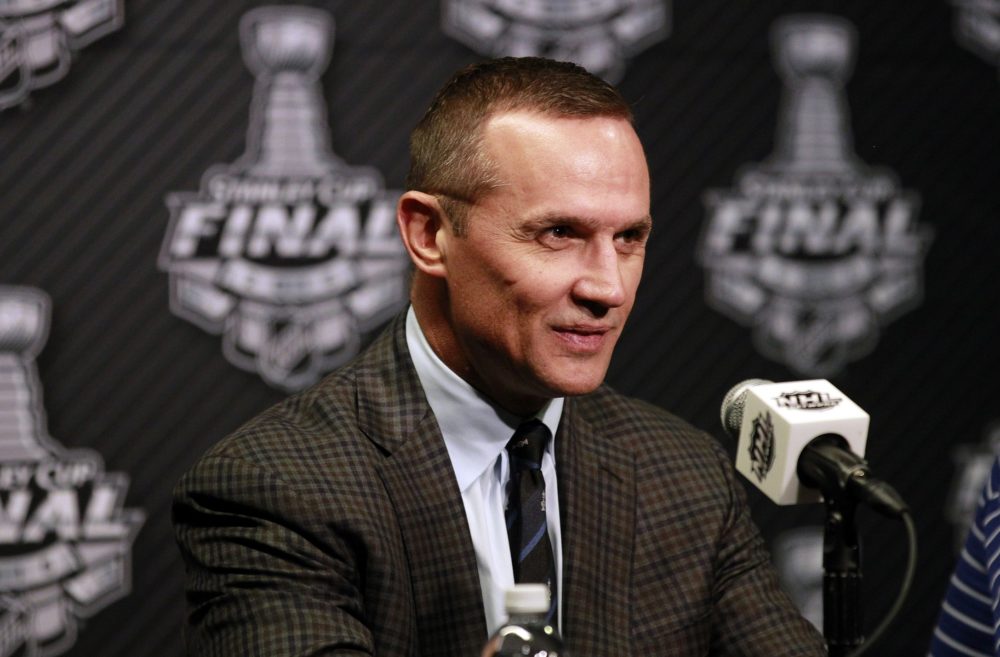For the better part of a decade, the start of training camp in Detroit has been accompanied by a familiar, if somewhat muted, chorus of “cautious optimism.” It was the sensible soundtrack for a team navigating the painful depths of a long rebuild. But as the puck dropped on camp this September, a different sound has emerged. It’s the roar of an engine, the insistent command of a new voice behind the bench, and the collective gritting of teeth from a locker room that is unequivocally done with waiting.
Under the watch of Head Coach Todd McLellan and the steady hand of General Manager Steve Yzerman, the Red Wings are no longer building for tomorrow; they are demanding results today. The message is clear, from the first-year pros to the tenured veterans: the time for excuses is over. A new, non-negotiable standard of performance has been set, and it’s creating the most compelling and consequential training camp Hockeytown has seen in years.
The McLellan Mandate: Full Throttle or Find the Exit
If there’s one phrase that encapsulates the seismic shift in the team’s culture, it’s Todd McLellan’s “foot on the gas” philosophy. Having taken over midway through last season, McLellan is now running his first full training camp, and he is leaving no room for interpretation. The expectation is 100% effort, 100% of the time. Any player coasting, even for a moment, is putting their roster spot in jeopardy.
This isn’t just tough talk for the media; it’s a proven methodology. After McLellan took the reins last year, the Red Wings played at a clip that would have been playoff-worthy, posting a 26-18-4 record. That translates to a 96-point pace over a full 82-game schedule—a mark that would have comfortably secured a wild-card spot in the Eastern Conference. The team proved to themselves they could win under his system, and now, that taste of success has become the baseline expectation.
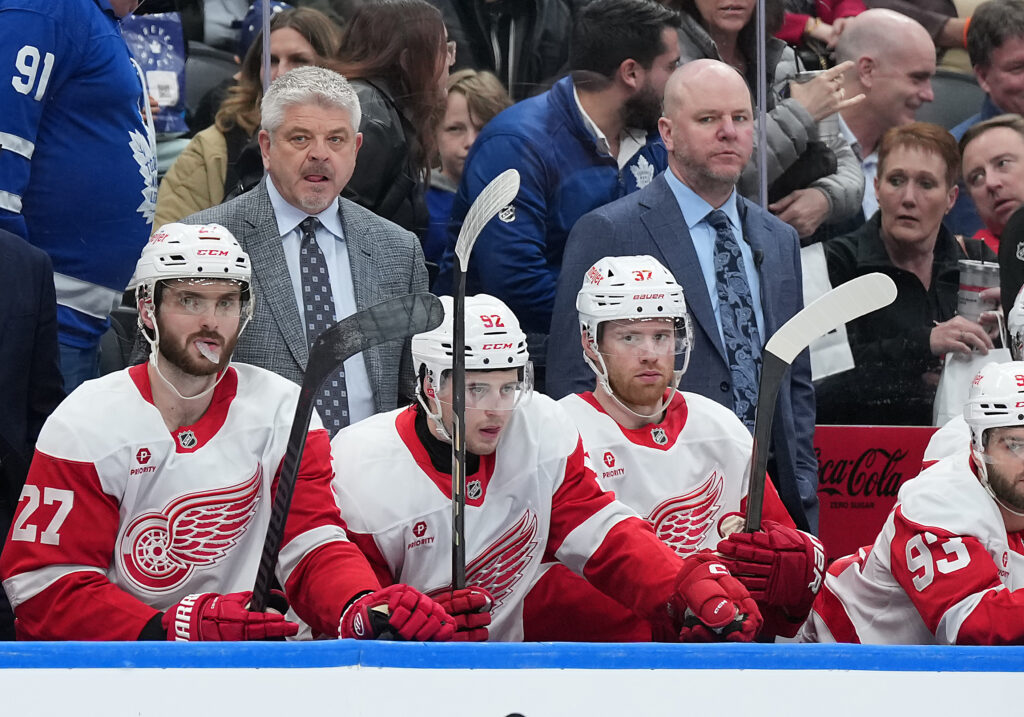
The players, far from recoiling from the intensity, have embraced it. Captain Dylan Larkin noted that McLellan consistently challenged the group after his arrival, and each time, the players rose to meet the demand. This isn’t a coach ruling with an iron fist; it’s a leader setting a high bar that a motivated group is eager to clear. The buy-in is palpable, reinforced by a new camp format featuring daily scrimmages. This structure is designed to eliminate any “rust” excuses and throw players directly into the fire, forcing them to learn, adapt, and compete in game-like conditions from day one. As McLellan sees it, when the preseason puck drops, his team will already be in game shape.
From Within the Room: Accountability and Roster Battles
While McLellan provides the framework, the players understand that true contention is built from within. Lucas Raymond, a cornerstone of the team’s young core, emphasized that sustainable success requires accountability that comes “from inside the room.” This sentiment is echoing throughout the locker room, fueled by the bitter disappointment of once again falling short of the postseason.
Larkin senses a different mentality this year, observing that many of his teammates arrived with “a little chip on our shoulder.” The collective frustration has morphed into a powerful, unifying motivator. This isn’t the hopeful energy of a young team happy to be in the mix; it’s the focused drive of a group that knows it’s good enough to compete and is angry that it hasn’t proven it yet. Raymond put it succinctly, seeing “the hunger in everyone’s eyes.”
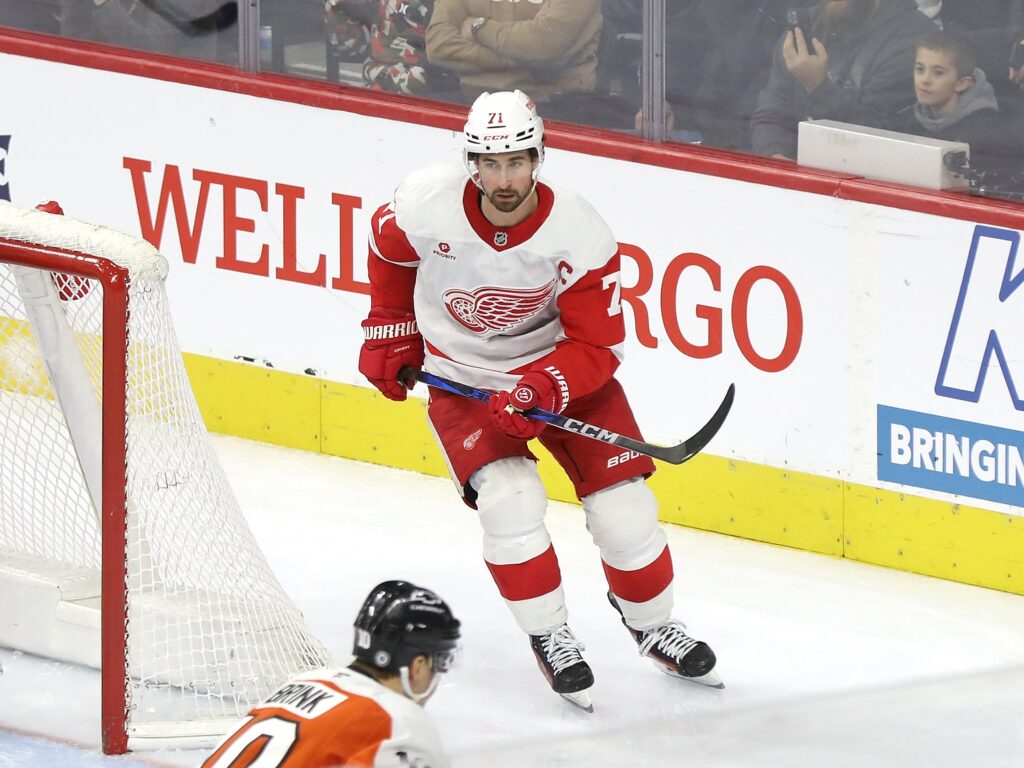
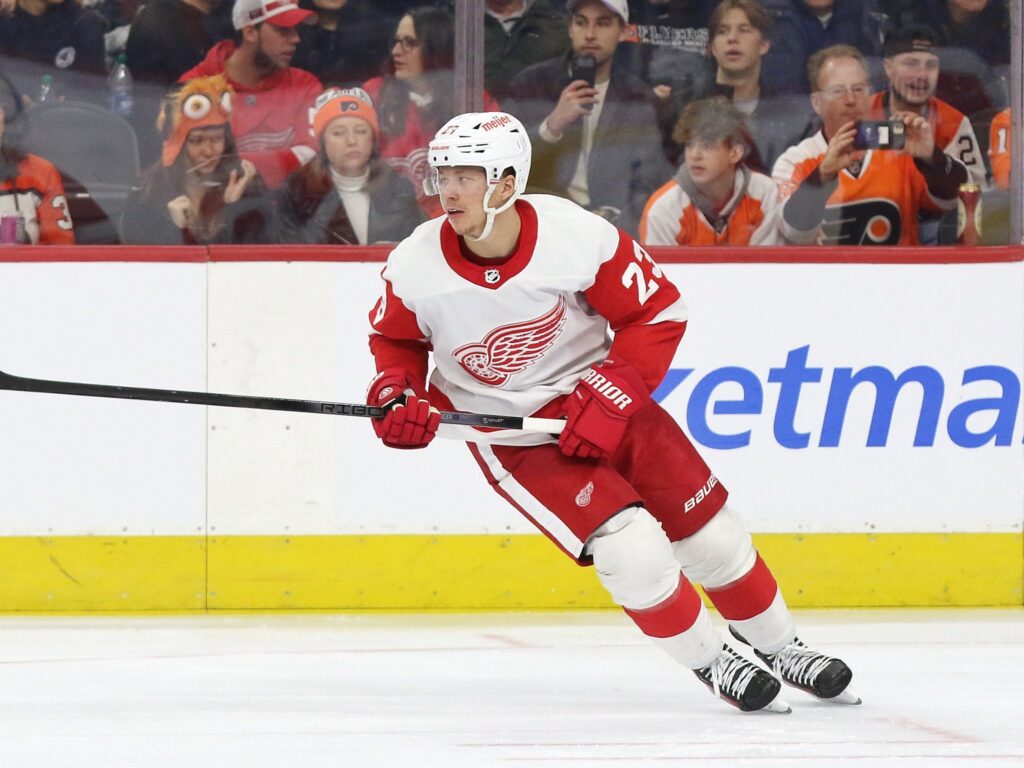
This internal drive is perfectly aligned with the front office’s philosophy. Steve Yzerman, ever the pragmatist, confirmed the competitive fire he sees, stating, “This group of players is motivated and they have a lot of pride… they want to make the playoffs as bad as you all want them to do that.”
This confluence of coaching demands and player motivation has turned the camp roster into a meritocratic battleground. Yzerman laid down the gauntlet with a simple, powerful declaration regarding roster spots for top prospects: “if somebody makes us better… they’re in.” Seniority, draft position, and potential are secondary to present-day impact.
The Yzerplan Enters a New Phase: Youth Must Earn Its Keep
For years, the story in Detroit has been about accumulating high-end prospects. Now, the story is about which of those prospects can seize a role on a team that expects to win. The door is wide open, but only for those ready to kick it down.
No prospect exemplifies this new reality more than Nate Danielson. The 2023 first-round pick is not just participating in camp; he is being given what Yzerman calls a “great chance” to make the opening night roster. The coaching staff is exploring legitimate, high-impact roles for him, from anchoring the third line as a defensively responsible center to flanking Dylan Larkin and Lucas Raymond on the top scoring line. The fact that a 19-year-old is being seriously considered for such pivotal positions speaks volumes about both his talent and the organization’s shift towards a pure, performance-based evaluation.
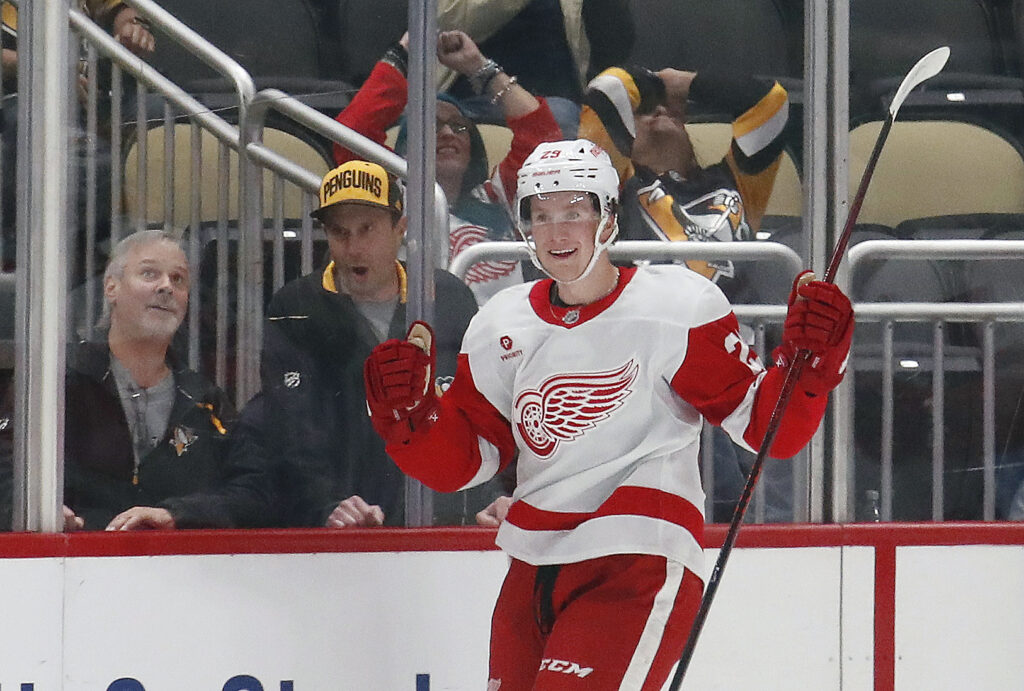
The opportunity isn’t limited to Danielson. Yzerman made it clear that other top prospects, like slick puck-moving defenseman Axel Sandin Pellikka, are on equal footing. If they can demonstrably improve the team during the preseason, a spot will be made for them.
This intense competition is playing out against a backdrop of key personnel updates. Top defensive prospect Simon Edvinsson is currently sidelined with a lower-body injury, preventing him from participating in camp. While Yzerman is optimistic about his availability for the season opener, his absence creates a void and, consequently, an opportunity for another defenseman to make an impression. On a positive note, 2024 first-rounder Carter Bear has been fully cleared for action after recovering from a partial Achilles tear. While he was held out of the rookie showcase as a precaution, his presence in main camp adds another dynamic young forward to the competitive mix.
The Inevitable Housekeeping: Camp Roster Takes Shape
As the intensity ramps up, the business of roster management has already begun. The initial training camp roster has been trimmed to 51 players (28 forwards, 17 defensemen, six goalies) following the first wave of cuts.
The moves represent the initial stratification of the depth chart. Forward Kevin Bicker was reassigned to the Deutsche Eishockey Liga, while junior-eligible players like Grayden Robertson-Palmer, Landon Miller, and Michal Pradel were returned to their respective clubs. On the professional side, defenseman Nicklas Andrews was released from his tryout and will report to the ECHL’s Toledo Walleye, and several players on amateur tryouts were also released.
These are the first of many difficult decisions to come. With nearly two dozen cuts still to be made, every practice, every scrimmage, and every preseason shift will serve as an audition.
For the first time in a long time, the final spots on the Red Wings roster are not just being filled; they are being won. The combination of a demanding coach, a hungry locker room, and a general manager committed to icing the best possible team—right now—has transformed the feel of this training camp. The era of cautious optimism is over. The era of accountability has begun.
Created with the aid of Gemini AI
